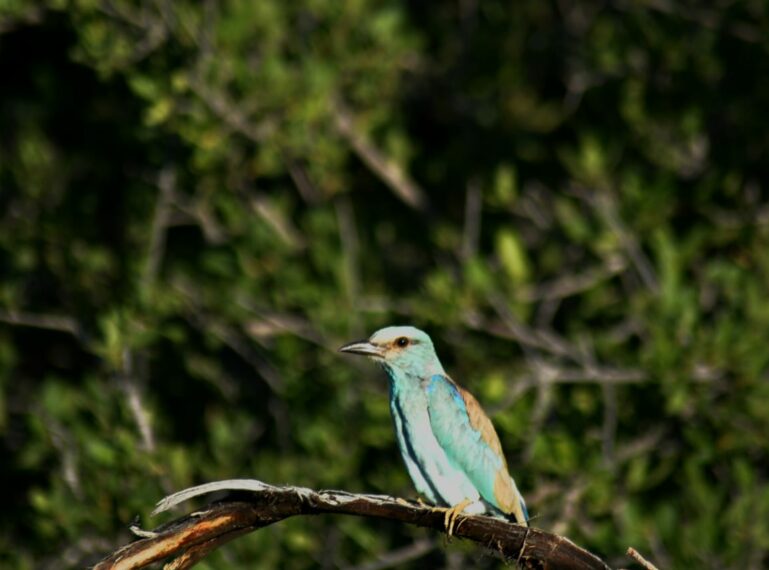
Billions of birds are sun-worshipping, summer-only travellers. Living in a winterless world they migrate from summer to summer up on repeat. Their time of arrival and departure depends solely on availability of food. When summer rains begin to fall and the bush bursts to life. As do the insect populations!
Experts believe migration behaviour is incredibly old, ancient passage. They believe the migrations of birds between Madagascar and mainland Africa may have begun when the ancient super-continent of Gondwanaland split up and Madagascar became an island over 100 million years ago. Perhaps it is that they are all simply returning home to lands that they have always known.
Forever in pursuit of optimal conditions for eating, breeding, and raising their young. National Geographic estimates that around 4,5 billion birds, representing approximately 185 species, fly north to south and back again between Europe, Asia and Africa each year. The long-distance migrants are mainly insect-eaters and waders, which follow set migration patterns.
‘Three-hundred-and-thirty-one bird species migrate using the East Asia-East Africa flyway, following the broad path of many migratory birds between North Asia and East to Southern Africa. Among other birds, these species include the Eurasian wryneck which can twist its head almost a full 180 degrees, the European roller whose bright sky blue wings contrast its black wingtips (the first picture seen above!), and the fancifully crowned Eurasian hoopoe that wears an off-shouldered coat striped black and white.’ – African Wildlife Foundation
Birds that migrate to South Africa include the colourful Greater Striped Swallow, Amur Falcon, White-rumped Swift, White Stork, Pygmy Kingfisher, Yellow-billed Kite, Lesser Kestrel, Honey Buzzard, Woodland Kingfisher, Red-chested Cuckoo, and European Bee-eater.
The insect-eating Amur Falcon breeds in the wildest regions of Northern China and South-eastern Siberia, migrating to Southern Africa to escape the harsh winters of its northern habitat. The Amur Falcon travels one of the longest migration routes of all bird species. The classic baby-bearing White Storks breed in Europe and Asia and migrate to southern Africa via the Middle East to enjoy an African summer. While the Lesser Kestrel breeds in central Asia, wintering in central and southern Africa.
The Greater Striped Swallow remains on the African continent, wintering in southern Zaire, Tanzania and northern Angola, and spending the summer months in South Africa, southern Zimbabwe and Namibia, during which time it will breed and raise its young. While it prefers dry open country and grassland, it is unafraid of humans and is often found in the vicinity of human settlements. It is a colourful bird with chestnut crown, nape and sides of the head, dark blue upper parts and a pale orange-coloured rump.
At the beginning of spring, amongst the intra-African migratory birds that will have returned are the Wahlberg’s.
A monogamous pair of Wahlberg’s eagles will have one to five nesting sites in their territory and will use the same nests for up to 28 years! This pair was sighted around Nyala Safari Lodge. One is a white morph hence the white colouring.This pair has been returning to this nest for at least, the last 5 years.
The migrate up to North Africa – mainly Nigeria and Sudan – and return for our Spring and Summer.
The woodland kingfisher is a vibrantly colourful and vocal bird. When we hear its call ring through the bushveld then we know that summer has well and truly arrived!
No matter the distance
Migratory birds can travel up to tens of thousands of kilometres on their annual journeys. Their survival is dependent on the availability of well-connected networks and chains of undisturbed habitats along their migration routes. They need these routes to refuel, rest and feed. Sadly, habitat degradation and loss are a huge threat to these birds.
Broad billed rollers are also intra – African breeding migrants, they embark on remarkable journeys across the continent, moving from Southern Africa to the north during the non – breeding season. Their arrival in Southern Africa in September and departure by April highlight their cyclical connection to the rhythm of the land. They were initially thought to be from Madagascar which still serves as one of their breeding sites.
The trade-off between the risk of dying on the non-breeding grounds and the risk of dying on migration.
It’s all a matter of territory
Even in the context of all the patterns described, some individuals of the same species will migrate thousands of kilometres further than others. In many species one sex migrates further south than the other. It’s all a matter of territory. Subordinate birds which are forced to migrate further due to competition for non-breeding sites closer to the breeding grounds.
Those that travel the furthest to the south-temperate regions are further advantaged by the fact that their stay coincides with the summer season of high productivity of their invertebrate prey. Hello insect feasts! Evidence suggests that the risk of predation by raptors also decreases towards the south. The different distance migrants are probably equally well-off in the long run, merely differing as to whether they risk their lives on the more northerly non-breeding grounds or during migration.
Internal GPS
Once the birds are in migration mode, a feeding frenzy ensues. This allows the birds to accumulate fat to power their journeys. Depending on what kind of journey they have ahead.
What to pack?
Some birds stop more such as Step Buzzards. They will cover relatively short-distance movements. They will replenish their energy reserves on a day basis, migrating for only a few hours, covering less than 200–300 kilometres each day.
Species which migrate long distances between stopovers tend to be those for which feeding en route is more difficult. The long nocturnal flights of shore- birds is largely because of the scarcity of suitable wetland habitats. Shorebirds have been known to accomplish some fantastic distances in short periods.
Some species are capable of increasing their weight significantly, and do so by up to 30 or 40 percent immediately before crossing the Sahara. In southern Africa, Palearctic shorebirds spend at least a month fattening up on their non-breeding grounds before migration.
Read more about it here in this paper written by Jane Turnpike called – Superpilots. Bird Migration in Africa
Watch birds flutter by from the wrap around deck at Nyala Safari Lodge or while taking a dip in the infinity pool at Nambu Camp. Enjoy birdlife as you relax in the unfenced surroundings of nThambo Tree Camp or while on a walking safari with Africa on Foot. Count the number of kingfishers you can spot in the reeds of the Sand River at Umkumbe Safari Lodge. Each and every one of our camps offers spectacular birding opportunities.
Witness the Crown Jewels of the bushveld, contact our reservations team here.
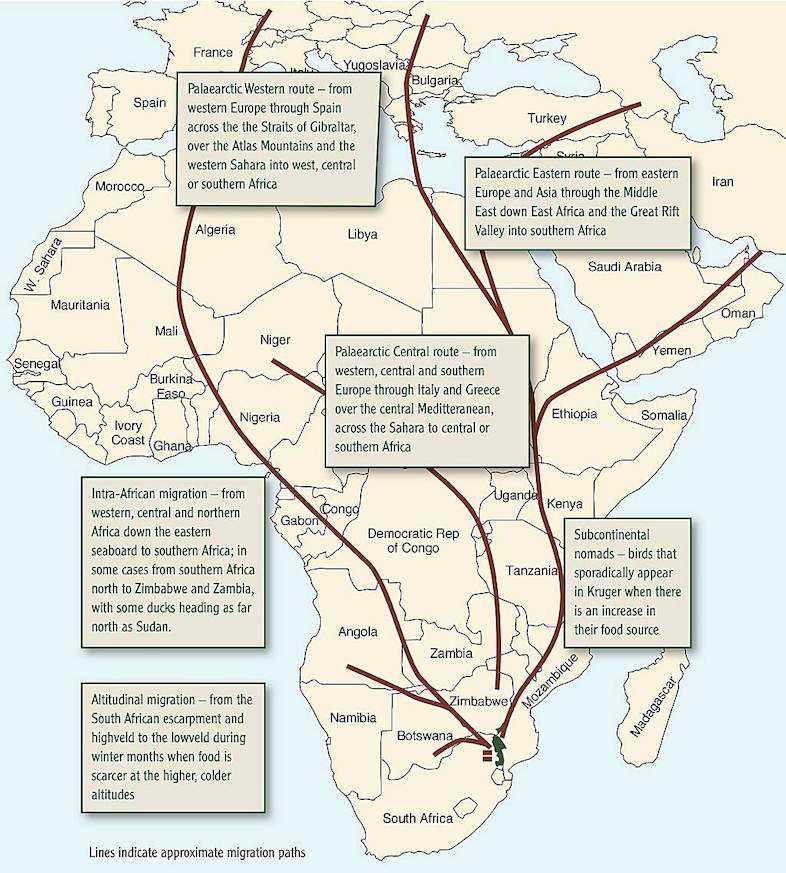
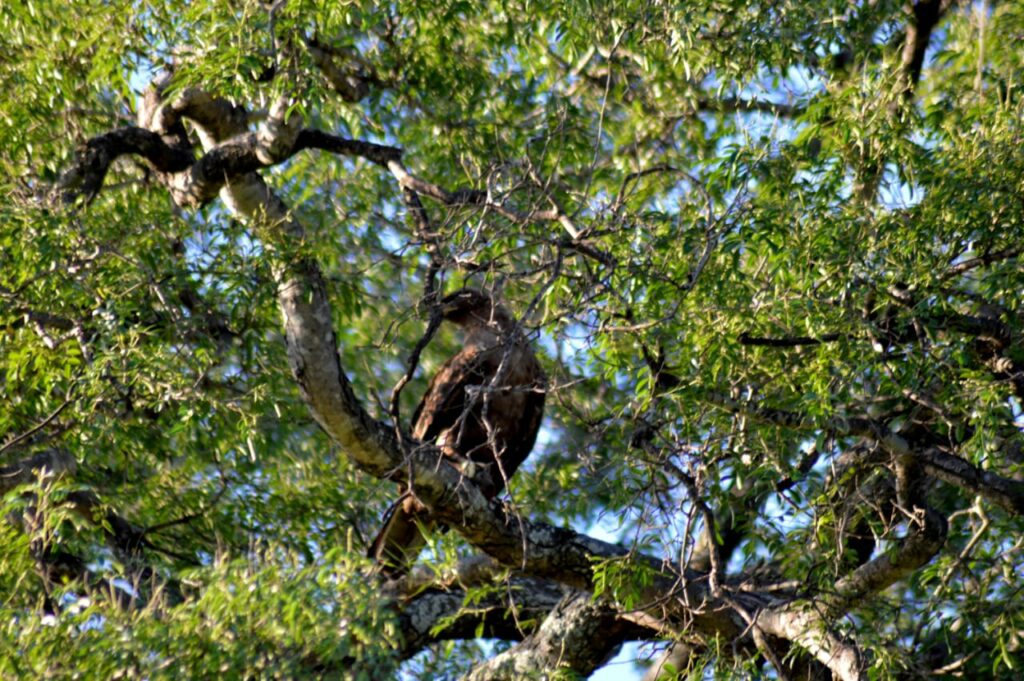
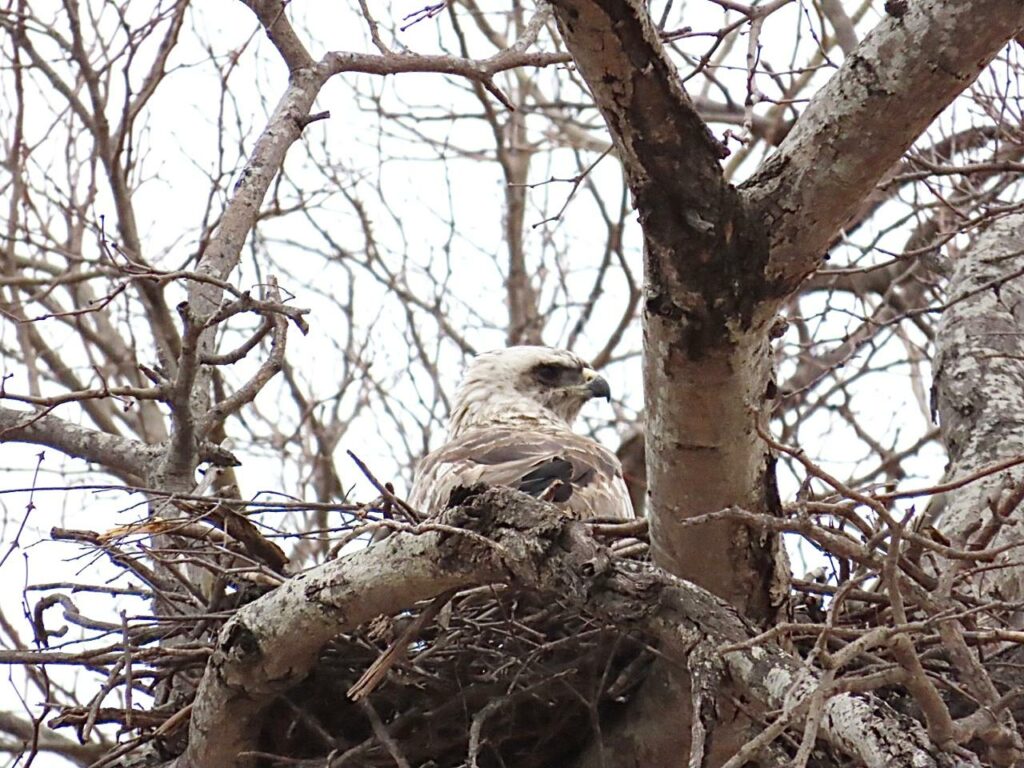
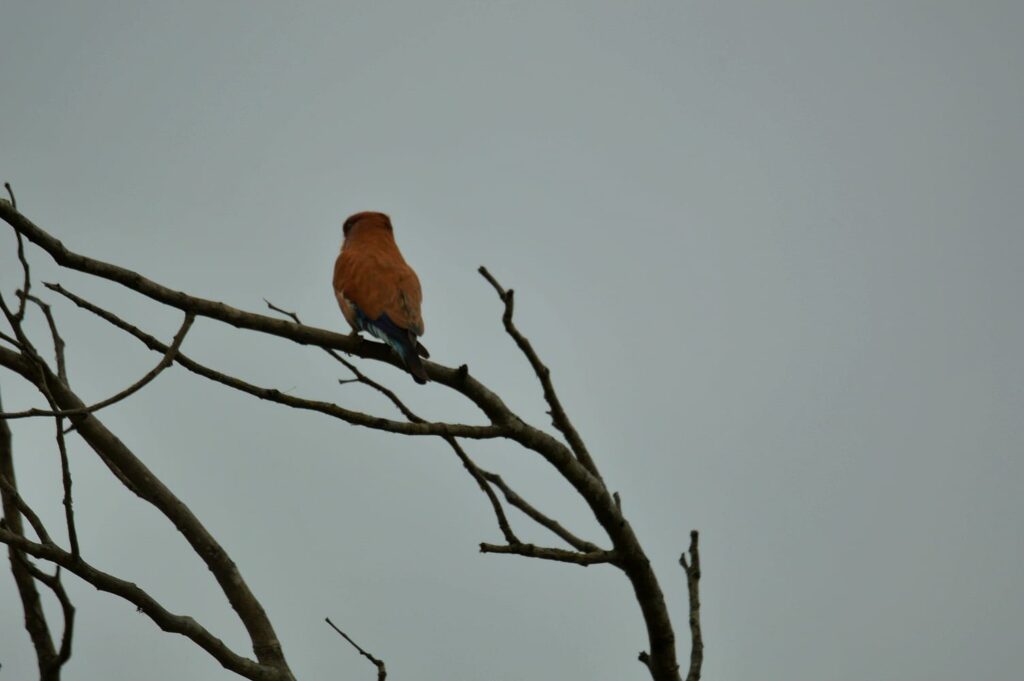
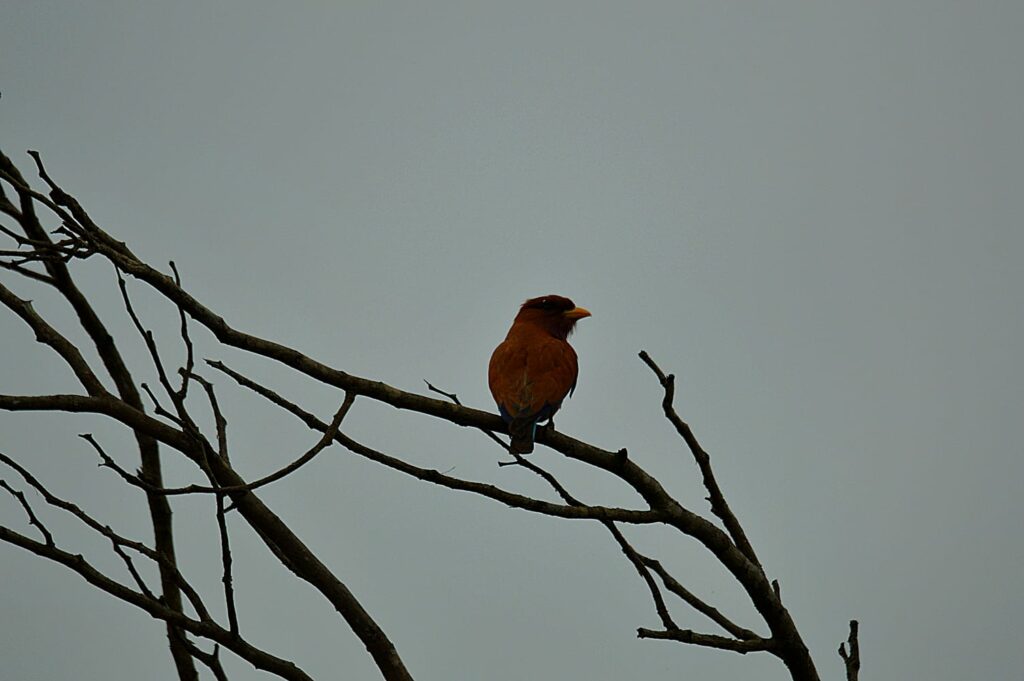
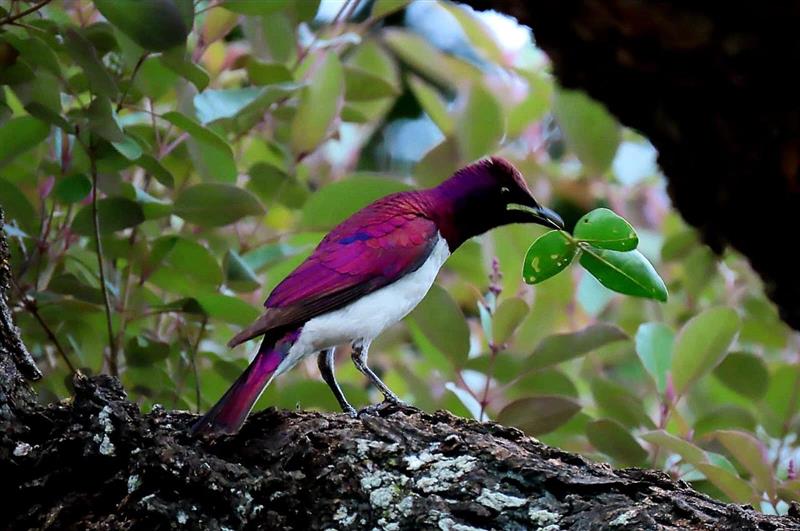
Leave a Comment